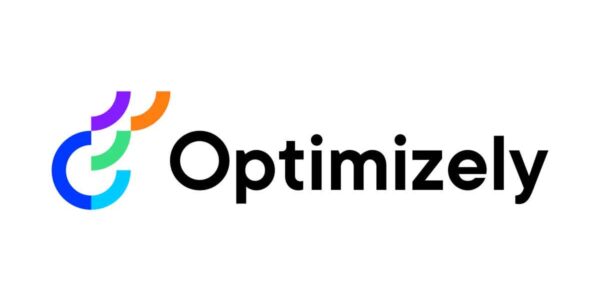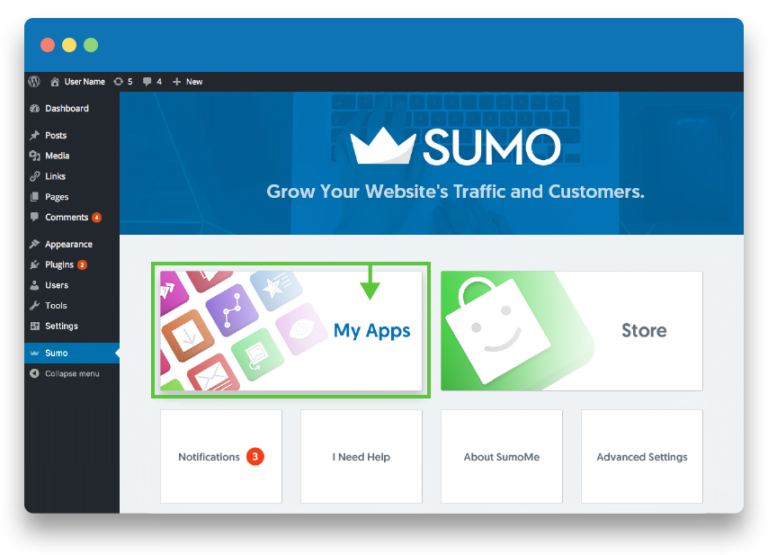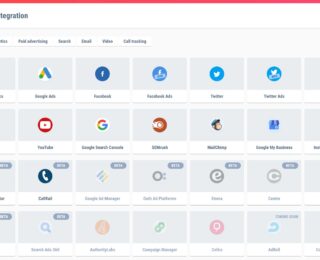Once you’ve learned the basics of on-page SEO and keyword research, there are a number of other tools that will help you with your digital marketing and search engine optimization efforts.
 Search engine optimization (SEO) can be a frustrating, difficult process for businesses.
Search engine optimization (SEO) can be a frustrating, difficult process for businesses.
In this article, we’ll look at five awesome SEO tools for small businesses.
If you’re anything like me, you might feel a bit overwhelmed when faced with an influx of SEO tools for content marketing.
How do you know which of these SEO tools can help you and how to use them? I’ve been researching SEO tools for a while, and here are the ones I’ve found that are most relevant to my needs.
You’re writing great content. You’re paying close attention to what your audience wants and resonating through storytelling in your marketing.
And you’re making sure your site runs at lightning speed.Surely, this is a good time to invest in some SEO help?
Could it be as simple as a few plugins?
Let’s take a look—

Google SiteKit
For free, the Google SiteKit plugin is as basic as it gets. Think of it as a technical SEO monitoring tool. It combines Google Analytics and Search Console data, embedded straight into your WordPress dashboard.
After you get it installed, Google will show you a search bar at the top of your webpage which you can use to evaluate your overall SEO, including local SEO.
If you’re already running a blog, start reading up about Google’s ranking algorithm and its major updates like BERT.
This isn’t one of those plugins which adds relevant keywords to your blog’s title and the body of your blog post, or crawls relevant domains to display relevant titles and snippets on your site—more on those below.
Sidenote: since we’re talking about Google’s tools, including Analytics— here’s a great way to measure the value of your organic search traffic using Google Analytics.

Optimizely
Although you essentially use the same core algorithm as Google, Optimizely uses their free premium SEO tool to help your site with your title and backlinks.
From your title to backlinks, your post will benefit from optimized titles and snippets that appear below Google’s own top-level domain search, Google’s Keyword Planner, and other SEO tools.
In other words, the free version of such a powerful SEO plugin is not a waste of your time. SEO will help your content and your rankings.
What does that mean for you? You now have more leverage over the conversion process.
Before, if you lacked a few backlinks, a poor title might have caused your site to slide down a few search results.
Maybe you didn’t write a good enough title, or the title distracted the algorithms’ eyes from your content.
Now, good SEO will help bring back those links — especially if you take advantage of my favorite method of link-building: the Cup of Coffee Method.
The Headline editor plugin makes it simple to select the optimal title for your titles.
 It’s also smart enough to produce titles in the best way possible.
It’s also smart enough to produce titles in the best way possible.
The plugin will suggest different titles based on a variety of criteria, such as the length of the headline (choose from 7, 9, or 15 words), its position in the title attribute, and more.
Using it, you can guide users away from keyword-heavy titles and towards more SEO-friendly titles that allude to your content rather than try to drive users into a black hole of SEO jargon — and be careful of SEO scams.
No, you’re not at your website’s speed, but at a quicker pace.
Many writers think writing at their website’s speed is all you need to do. Wrong. Here are some tips for better copywriting.
However, most people aren’t capable of producing content that moves as quickly as their website.
They’re struggling to stick to the same schedule and having a tough time keeping up with blog posts.
Not to mention, they’re exhausted after a long work day and don’t feel they have any time to write.
If you’re one of these people and have a slow website, it’s likely slower than it needs to be.
You might be using an older, slower website hosting platform.
If you’ve got the technical know-how to fix your site’s speed, then you know how to optimize your content for SEO.
As a blogger, it’s your responsibility to make your site perform well.
Most SEO best practices refer to the principle of least pictures possible.
You don’t want to spend time on anything that can add an unneeded metric to your site.

Image SEO Optimizer
The ideal site is a series of appealing images, in-depth descriptions, and fresh content.
Good image SEO can increase your website’s visibility on search results pages (SERPs).
The image serves both as a thumbnail image for a page and also as a caption for your whole page.
Google, as the search engine of choice, provides a variety of helpful hints as to how to optimize images.
Keep in mind that you don’t have to overcomplicate your images to make them competitive.
Try these tips to ensure you’re crafting images that will catch the eye of search algorithms:
Crisp, clean, and appealing photos help users consume your content faster, said Martin Sweeting, marketing manager at Pinterest.
 In addition, your user interface (UI) is your chance for a visually appealing website.
In addition, your user interface (UI) is your chance for a visually appealing website.
If your images aren’t up to snuff, users will likely abandon your site because they can’t find what they need fast.
To make your images stand out, you need to grab the attention of users and make them want to seamlessly transition to the rest of the page.
When they first arrive on your site, they’ll likely jump into your headlines, content, or navigation.
The text within these sections is the only part of your page that users can currently see.
That’s why UI can be important to your SEO.
If you’re struggling with your website’s update and speed, consider spending a little more time on your visuals.
Upwork, the freelancing platform, has a Search Engine Optimization feature that can help you test different images and provide ideas for better images.
Maybe you know that Google has a data cap that’s approaching 100GB.
Or maybe you simply don’t want Google to downgrade or take down your site because of a minuscule number of errors.
One easy way to combat this is to utilize the right cloud storage as a content delivery system (CDMS).
To learn more about other content delivery systems, I recommend checking out these guides.
When you hit publish, the content reaches your audience almost instantly on any number of platforms including:

Sumo
Sumo’s free plan is perfect if you want to start and test out the feature immediately.
A 12-month commitment will set you back $49.95.
This is a monthly fee, and although their plans are tied to a calendar-year timeline, I do suggest a lump sum to start out for the sake of cost control.
For $5 a month, you get up to 5,000 impressions, 50 articles, and 50 emails sent direct to your subscribers’ inboxes.
For $10 a month you get up to 10,000 impressions, 200 articles, and 200 emails sent to your subscribers’ inboxes.
These plans are somewhat limited, and the content delivery system only delivers emails until the subscription period is over.
If you’re someone with zero on-page SEO experience, I recommend sticking with the free plan to start out, and upgrading to a plan with better features as your skills improve.
 For $9.99 a month, you can guarantee 100,000 impressions, 200 emails sent to subscribers, or 500 articles published.
For $9.99 a month, you can guarantee 100,000 impressions, 200 emails sent to subscribers, or 500 articles published.
I chose the unlimited plan to have as much traffic as I can handle fairly quickly.
Google optimized Sumo for keywords, which is all well and good, but Sumo exclusively uses the search engine on their free plan.
Put simply, once you tell Sumo what your keywords are, the site will begin to show your content to those who are in the Google AdWords spend per month radius.
Sidenote: Sumo also offers AppSumo, which is a phenomenal social media tool and it can really help with your LinkedIn selling and other social media business needs, like reporting.
As you can probably tell, most of these apps don’t take your on-page or off-page SEO into account, but instead rely on Google to figure out what works and what doesn’t.
Some of these tools actually help you better understand how to break through Google’s algorithm and have designed smart backlinks to help you with optimizing your content.
